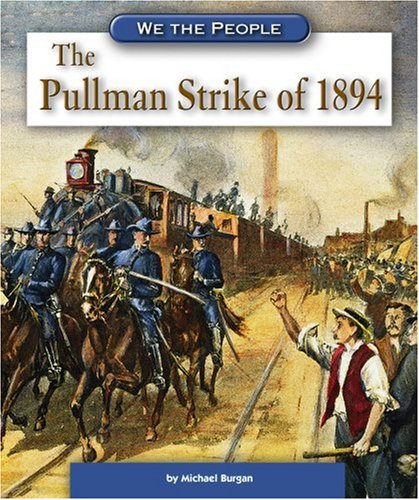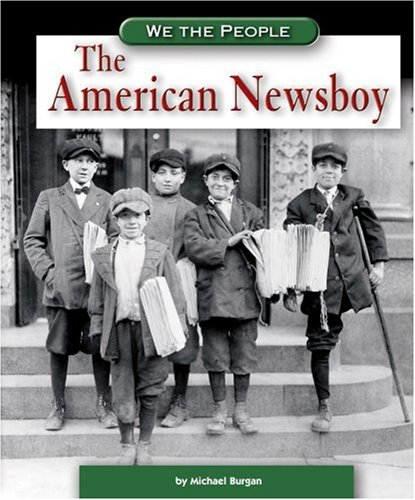-
The Monongah Mining Disaster
Jason Maurice Skog
Library Binding (Compass Point Books, Jan. 1, 2008)In the coal minining towns of West Virginia, it was a daily tradition for the wives of coal miners to kiss their husbands good bye as they headed off to work. So, as they did everyday, hundreds of women in Monongah, West Virginia, kissed their men farewell on December 6, 1907. Little did they know what the day held. Shortly after 10 o'clock that morning, an explosion shook the mines and killed hundreds of men and boys. Today, the disaster still stands as the worst mining accident in U.S. history. Y
Y
-
Angel Island
Alice K. Flanagan
Library Binding (Compass Point Books, Sept. 1, 2005)Describes Angel Island, the California immigration station set up to receive people from Asia, and the story of how immigration officials detained many Chinese people whom they wanted to keep out of the United States. T
T
-
Women of the Harlem Renaissance
Lisa Beringer McKissack
Library Binding (Compass Point Books, Jan. 1, 2007)In the 1920s and 1930s, New York City’s community of Harlem was filled with creative work in literature, art, and music. At the heart of this cultural explosion were talented women who took their experiences of being black females and shaped them into meaningful careers as writers, artists, and musicians. Having been fortunate enough to pursue educational and career opportunities, the women of the Harlem Renaissance moved beyond more typical female roles of the time. Today, they are remembered and respected not only for their work but also for their ability to inspire. X
X
-
Angel Island
Alice K. Flanagan
Paperback (Compass Point Books, Sept. 1, 2005)Describes Angel Island, the California immigration station set up to receive people from Asia, and the story of how immigration officials detained many Chinese people whom they wanted to keep out of the United States. T
T
-
The Lowell Mill Girls
Alice K. Flanagan
Paperback (Compass Point Books, Sept. 1, 2005)Describes the history of the textile industry in Lowell, Massachusetts, and the employment and other opportunities that the mills offered to New England women and girls. N
N
-
The Triangle Shirtwaist Factory Fire
Marc Tyler Nobleman
Library Binding (Compass Point Books, Jan. 1, 2008)Nobleman, Marc Taylor U
U
-
The Orphan Trains
Alice K. Flanagan
Paperback (Compass Point Books, Jan. 1, 2006)Tells the story of how homeless children during the late 1800s and early 1900s were taken to new homes on trains which were known as orphan trains. N
N
-
The Harlem Renaissance
Dana Meachen Rau
Library Binding (Compass Point Books, Sept. 1, 2005)Details the Harlem Renaissance, the era in the 1920s and 1930s where this New York City neighborhood celebrated their African American identity through art, music, literature, and theater. Q
Q
-
The Pullman Strike of 1894
Michael Burgan
Library Binding (Compass Point Books, Sept. 1, 2007)In the summer of 1894, employees of Pullman Palace Car Company near Chicago decided they were fed up with their work conditions, including reduced wages. The laborers went on strike, refusing to go to work. Railroad workers from across the country joined the strike to show their support. This action shut down the railroads across the Midwest and beyond. The Pullman Strike helped some business and government leaders see that workers’ concerns were important and deserved to be addressed. X
X
-
The American Newsboy
Michael Burgan
Library Binding (Compass Point Books, Jan. 1, 2007)"Extra! Extra! Read all about it!" The famous cry was heard on city streets throughout the country. Beginning in the 1830s, newsboys, and a few newsgirls, stood on the street corners in New York City and other major cities shouting headlines in an effort to sell newspapers. Their popularity spread, and by the late 1800s, newsboys appeared as characters in books. Decades later they were even featured in movies. "Newsies," as they were called, became famous, but the newsboys’ lives were far from glamorous. T
T
-
Selma's Bloody Sunday
Lucia Tarbox Raatma, Anthony Wacholtz
Library Binding (Compass Point Books, Sept. 1, 2008)The 1870 passage of the 17th Amendment to the Constitutionthat no man could be denied the right to votewas a big step forward in the civil rights movement. However, nearly 100 years later, most African-Americans in the South still could not vote. In March 1965, a march from Selma, Alabama, to the state Capitol in Montgomery was planned to demand voting rights. But the marchers only made it six blocks before they were stopped and brutally attacked by state troopers. March 7 became known as Bloody Sunday. The beatings outraged Americans who rallied to support the civil rights movement. T
T
-
Yellow Journalism
Jason Maurice Skog
Library Binding (Compass Point Books, Jan. 1, 2007)In 1890s New York City, two larger-than-life publishers went head to head in a battle for newspaper readers. William Randolph Hearst and Joseph Pulitzer did whatever it took to sell papers. They printed half-truths. They filled their newspapers with stories of crime, corruption, and scandal. Violence, tragedy, and gossip were prized topics. It was the era of yellow journalism. Although it didn’t last long, it left a lasting impact on American journalism that continues to this day. U
U